Savonius windmill
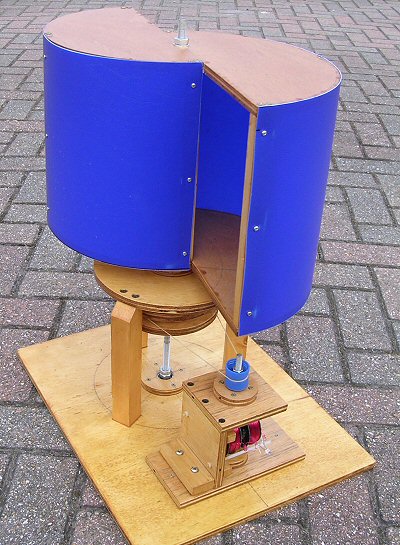
This is an experimental vertical axis windmill and electrical generator, which in a fair breeze, easily provides 5V at a few 100mA's. I know that the following details are a bit scanty but I wanted to get something up on the web site to inspire people to get experimenting. I don't know when I will have time to add more details but do e-mail me if you think some major info. is missing and I will try to respond.
In vertical axis windmills the turbine is positioned so that it rotates along a vertical axis. Changes in wind direction don't tend to effect such a windmill because unlike horizontal axis windmills they don't have to point into the wind for maximum efficiency.
If the wind turns round (as it does sometimes when it is blustery) a normal windmill will slowly come to a stop and then turn the other way, with subsequent loss of power during this period. A vertical axis windmill wont really notice any difference and will continue to produce power without stopping.
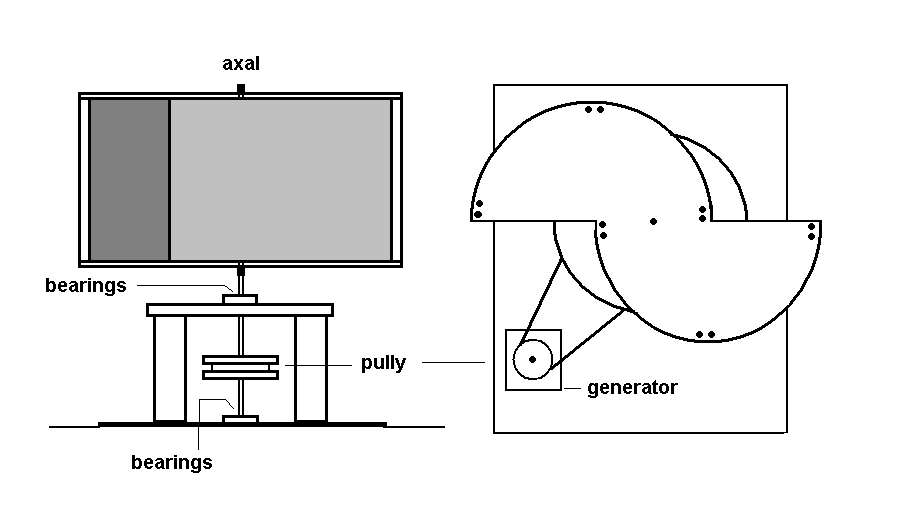
One disadvantage of the horizontal axis mill is that, for all but the short mills, the axis needs to be supported at each end. This means they sometimes need a clumsy supporting structure around them limiting the height above ground they can reasonably be positioned. As wind speed is usually greater and more stable high above the ground its a major limitation for these otherwise excellent devices.
This particular design uses 10 mm studding (thread) as an axle to support the wind turbine and transmission gearing (a 15cm diameter wooden pulley). Everything is made from 1/2" plywood coated with several varnish layers to weather proof. As its fairly small we support the whole turbine from the base.
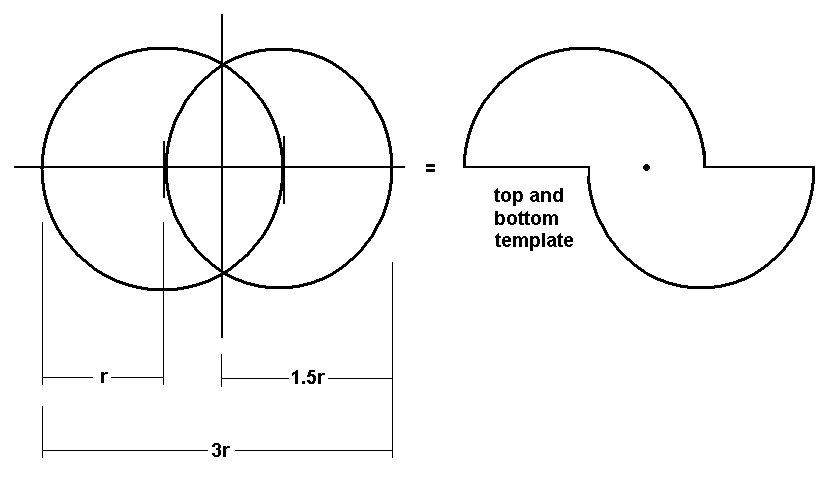
The basic Savonius design is a S shaped turbine made up of two double half circle (in this version each was ca. 30cm diameter) wooden templates which are supported by wooden batons. Half the circular shapes produced by the templates are covered in light weight plastic sheet to form a curved sail / wind resisting surface for the wind to make 'contact' with.
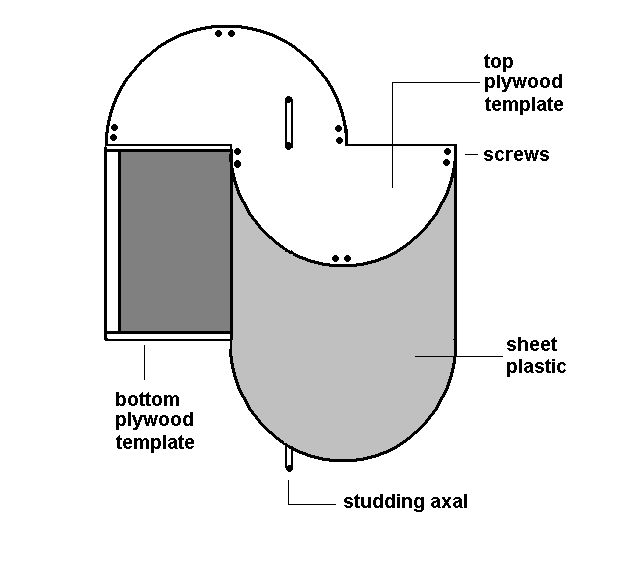
As the turbine turns it moves the axle turning the wooden pulley below. The gear arrangement to the simple generator, from a large to small pulley means the relatively slow turbine motions are stepped up powering the electrical generator at a suitable speed for all but very low wind speeds.
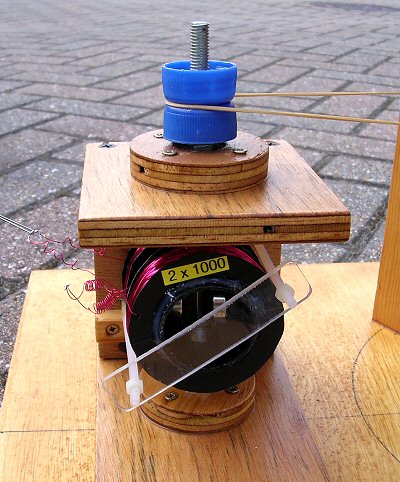
The generator is made using 8mm studing with two bearings as in the windmill axle. Two magnets are fixed on two nuts at the center and two coils of wire (each 1000 turns of ca. 30SWG enamalled copper wire) are arranged around them. As the axle spins the magnets rotate inducing electricity into the coils. This type of generator produces an AC voltage. Its nice as there are no moving electrical parts and so no connections to go wrong with water rust and oxidation. They work happily in all weathers. My one is shown with a white LED attached to the generator. See the generator pages (links below) for details of suitable magnets.
The voltage produced depends on the rate at which the generator axle / magnets rotate. This in turn is dependant on the gear ratio between the large pulley on the windmill axle and the pulley on the generator. I used two bottle tops back to back secured by two washers and nuts as a simple homemade pulley for the generator.
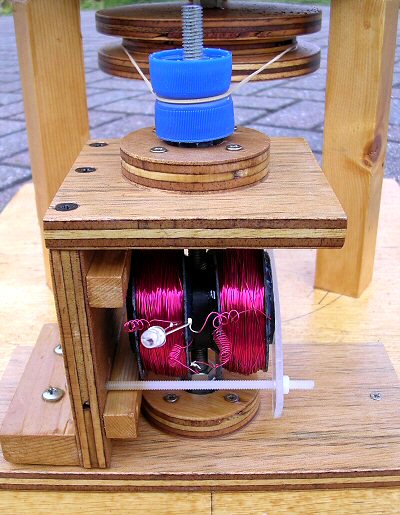
The turbine and pulley system is fairly heavy, this means the windmill is a little slow to get working but it does tend to smooth out variations with changes in wind speed. The extra momentum keeps it going when the wind speed dips now and again.
Finish the mill with a few coats of outside varnish on all the wooden surfaces to give it a water / weather proof finish. In an ideal world you might want to put cups / covers on the studing just above each of the bearings to protect them from rain and dirt etc. (you might get away with only having to do it on the very bottom bearing as the turbine, small pully and generator body give some protection to the other three bearings. A drop of oil every so often works wonders ....
movie clip of a savonius turbine and generator (ca. 4Mb)
The following URL's will be useful:
simple Rough Science generator I
simple generator II
6 gens page
Natures Power page
Note: coming soon:
Vega module film clip of three windmills (including the Sanovius mill shown here)
Dr Jonathan Hare, E-mail: jphcreativescience@gmail.com
NOTE: Although none of the experiments shown in this site represent a great hazard, neither the Creative Science Centre,
Jonathan Hare nor The University of Sussex can take responsiblity for your own experiments based on these web pages.
THE CREATIVE SCIENCE CENTRE
home | diary | whats on | CSC summary | latest news






